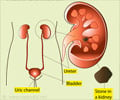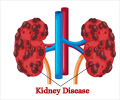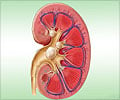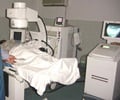Different techniques should be used to remove single stones that have become lodged in the distal ureter after being expelled by the kidney, depending on the size.

"ESWL and URS are both accepted treatments for distal ureteric stones, but there is a lot of discussion about which surgical technique should be used as a first-line strategy for this condition" explains co-author Professor Vincenzo Mirone.
"Approximately one in three adults with kidney stones will have a distal ureteric stone at some point in their lives. Most stones with a diameter of up to 0.5cm will be expelled spontaneously when the patient urinates without requiring any active intervention. For larger stones that get stuck in the ureter, spontaneous expulsion is very difficult and requires active intervention."
The Italian team studied 273 patients with single distal ureteric stones ranging from 0.5cm to 1.5cm, in what they believe is the first prospective randomised study comparing ESWL using an electromagnetic lithotripter and URS.
There were no significant differences between the groups, which had an average age of 50 and were equally split between males and females.
Most of the ESWL treatments (98%) were performed on an outpatient basis and none of the patients required anaesthesia or sedation. Patients received 120 shockwaves, with an average of 3,200 per session. Treatment sessions ranged from 29 to 42 minutes, averaging just under 34 minutes.
Advertisement
Overall results included:
- Just under 93% of the ESWL patients achieved stone-free status after the procedure, with the remaining seven per cent successfully treated using URS. One ESWL session was sufficient in 55% of cases, two sessions were needed in 31% and three in 13%.
- Fifteen per cent (21) of the ESWL patients suffered complications, with two-thirds requiring a ureteric stent following obstructive pyelonephritis (kidney infection) and just under half reporting mild pain.
- Just under 95% of the URS patients were stone free following their procedure, 92% after the first procedure and the remainder after four weeks following a second URS procedure.
- Nineteen per cent (26) of the URS patients suffered complications. Nine patients had intraoperative complications, 15 had postoperative fever and seven had postoperative bleeding.
"Statistical analysis showed no significant differences in overall stone free rates, treatment duration, complications and the need for auxiliary procedures" says Professor Mirone.
"However, there were clear differences in both groups when we divided them into patients with stones of up to 1cm and stones of over 1cm."
- ESWL patients with stones of 1cm or less had significantly fewer complications than patients with stones of more than 1cm. (7% versus 28%). They also required significantly fewer re-treatments (12% versus 80%) and auxiliary procedures (3% versus 20%). Stone-free status also fell from 96% for smaller stones to 90% for larger stones.
- Stone-free rates in URS patients were very similar, regardless of stone size, at approximately 95%. Retreatment was higher in patients with stones exceeding 1cm (11% versus 5%) but complications were lower (14% versus 24%) as was the need for auxiliary procedures (12% versus 25%).
Source-Eurekalert















